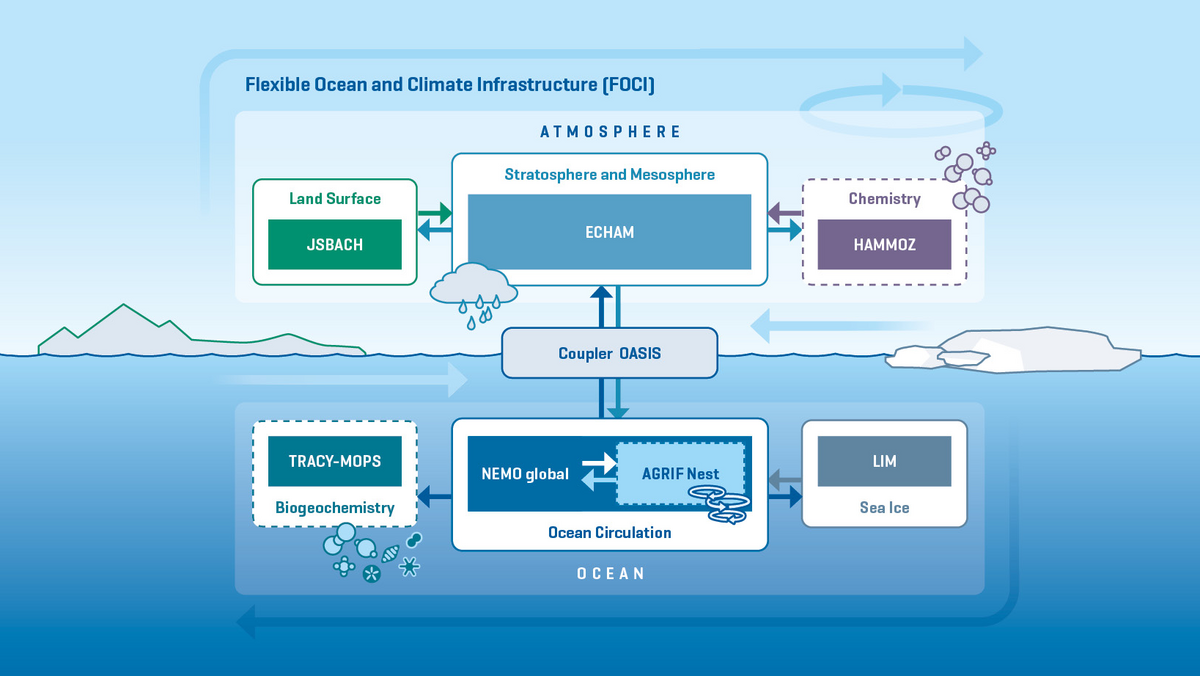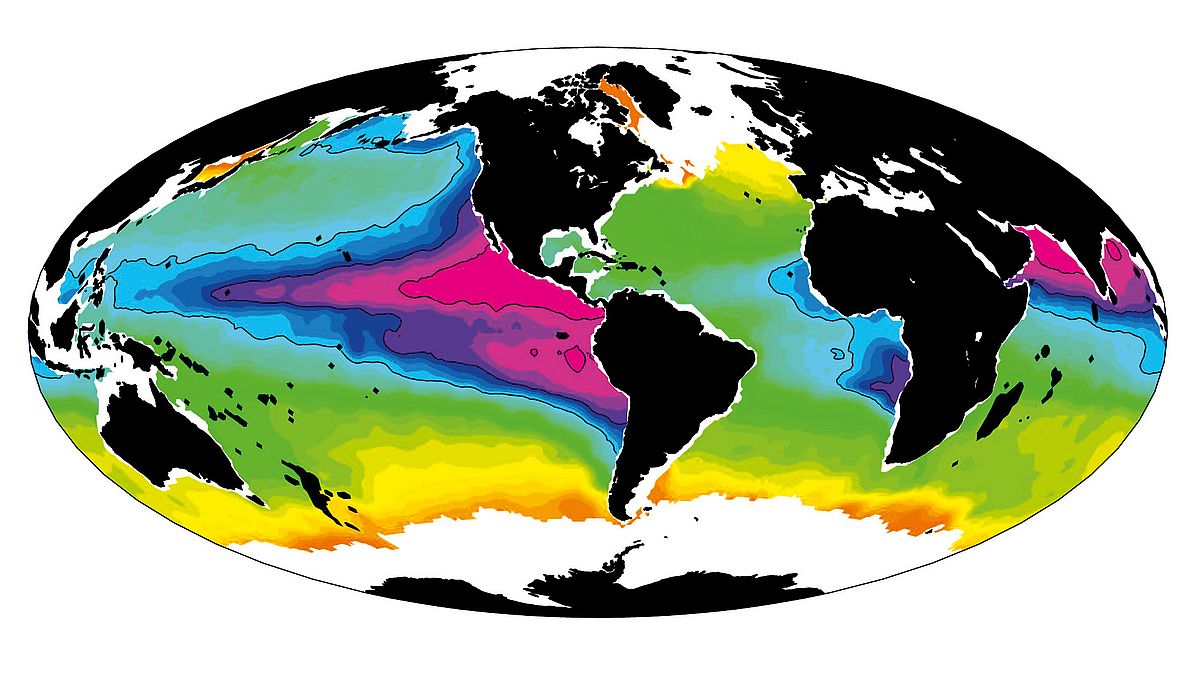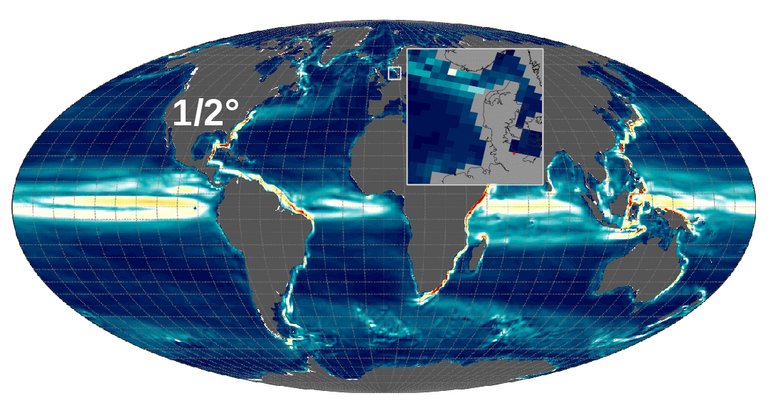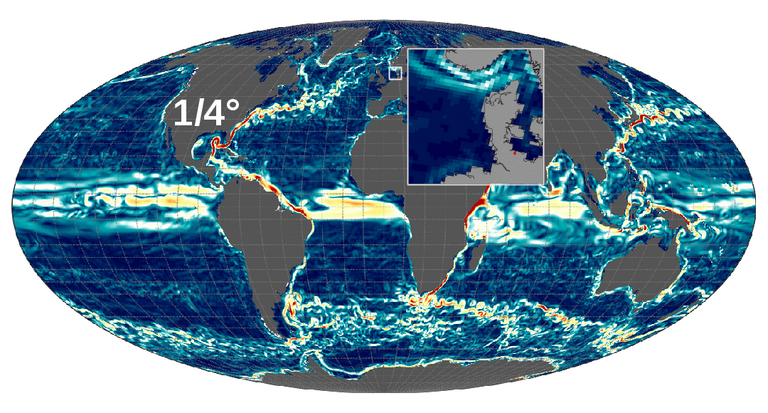Ocean and Climate Models: Marine Research On Shore
Week-long expeditions on the vast ocean, taking measurements, obtaining samples to be studied on board or later in the laboratory on land - this is a very important component of marine research. But there are also researchers at GEOMAR who rarely or never go to sea: The modellers. They describe the Earth system, or parts of it, with the help of physics, which is the basis for model simulations. At GEOMAR, a number of computer models for different applications are used, which correspond with each other and systematically complement each other.
Ocean Modelling
The transport of mass and energy provided by ocean currents is crucially important for natural climate fluctuations and for human-induced changes in the global climate system. The research unit Ocean Dynamics at GEOMAR focuses on high-resolution ocean models and develops them further in close cooperation with other international research centres. Showpieces are models with resolutions of 1/20 degree. They subdivide ocean regions into boxes with an edge length of a few kilometres. These models are among the most powerful of their kind worldwide and can even resolve small-scale ocean eddies.
The other side of the coin is that sometimes up to 12 hours of computing time on national supercomputers are required to simulate one year. Flexibility allows the regional increase of resolutions, the "nesting", in which individual current systems such as the Gulf Stream system or the Agulhas current system off South Africa can be simulated. Here, grid widths of 1/60 degrees with a resolution of one to two kilometres are possible. For studies on climate change, but also for studies on the history of climate, there are coarser resolution versions that are also used in the context of coupled ocean-atmosphere models.
Coupled Climate Models

Interactions in the climate system cause natural climate fluctuations that take place over periods of months to centuries. Model studies help researchers to better understand these natural climate fluctuations and to provide more reliable estimates of the future development of the climate. For this reason, a modern climate model not only includes an atmospheric and oceanic component, but also sea ice and biogeochemical components that are interactively coupled.
With the new flexible Kiel climate model system FOCI, the resolution can be increased in certain ocean regions, such as the Gulf Stream system in the North Atlantic or the Agulhas Current system in the area between the South Atlantic and the Indian Ocean, in order to investigate the influence of ocean eddies on large-scale circulation patterns in the atmosphere and ocean. Simulations with these complex models are so elaborate that they are only possible on the most powerful mainframe computers. The development of these models also requires a great deal of expertise and experience. Thus, the climate model system FOCI was built jointly by the GEOMAR research units Maritime Meteorology and Ocean Dynamics with national and international partners, such as the Max Planck Institute for Meteorology in Hamburg or the European NEMO consortium.
Biogeochemical Modelling

Not only physical processes have an impact on the climate. Biology also affects the cycling of carbon and other elements such as nitrogen and oxygen and has a direct effect on the climate, particularly through its impact on atmospheric greenhouse gas concentrations. Additional carbon dioxide not only warms the atmosphere, but also leads to acidification in seawater. These biogeochemical processes and their interactions with marine ecosystems are studied at GEOMAR with the help of modelling. For this purpose, ecological and biogeochemical models are developed, calibrated by comparison with observations and experiments and coupled into the physical climate models. In recent years, a significantly improved understanding of the carbon cycle and oxygen supply in the ocean has been achieved in this way.





